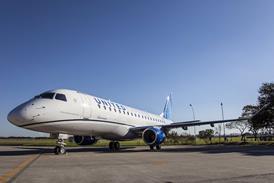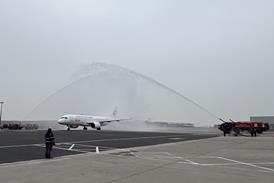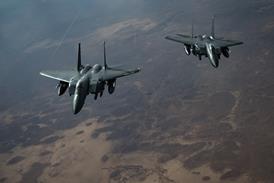An A310-300's rudder literally exploded in flight, according to the just-published final report by the Transportation Safety Board of Canada (TSBC) on the 6 March 2005 incident.
The incident destroyed almost all of the single-section composite rudder, but the aircraft landed safely.
The report says aircraft took off from Varadero, Cuba bound for Quebec, Canada "with a pre-existing disbond or an in-plane core fracture damage to the rudder, caused by either a discrete event, but not a blunt impact, or a weak bond at the z-section of the left side panel.
This damage deteriorated in flight, ultimately resulting in the loss of the rudder".
The TSBC describes the probable cause: "During the occurrence flight [the weakened area of the rudder] having reached the critical size, the damage rapidly propagated, resulting in a loud and sudden explosion of the skin.
This separation could have damaged the opposite side panel and created a large sideways force on the empennage. The resulting sudden reduction in torsional stiffness led to the onset of rudder flutter.
About one second later, there was a large aft and downward force associated with failure of the upper hinge points, as the rudder separated.
The rudder-separation event lasted about seven seconds, after which only 16 per cent of rudder effectiveness remained. During the remainder of the flight, more rudder pieces separated, and the aircraft landed with no aerodynamically effective rudder remaining."
The investigator adds: "The manufacturer's recommended inspection program for the aircraft was not adequate to detect all rudder defects the damage may have been present for many flights before the occurrence flight.
This model of rudder does not include any design features in the sandwich panels to mechanically arrest the growth of disbond damage or in-plane core failure before the damaged area reaches critical size (such a feature was not specifically demanded for certification)."
Rudder inspections were ordered via a series of all-operators telexes as the investigation progressed, and the TSBC comments: "These various inspections found examples of disbonds, damage around hoisting points and trailing edge fasteners of the rudder, corrosion and abrasion at hinges, seized hinges, hinges with excessive free play, and water ingress."
Related articles
- Air Transat scare prompts call for more rudder checks
- US accident watchdog calls for immediate checks on some Airbus rudders?
- Rudder loss continues to perplex
Source: FlightGlobal.com























